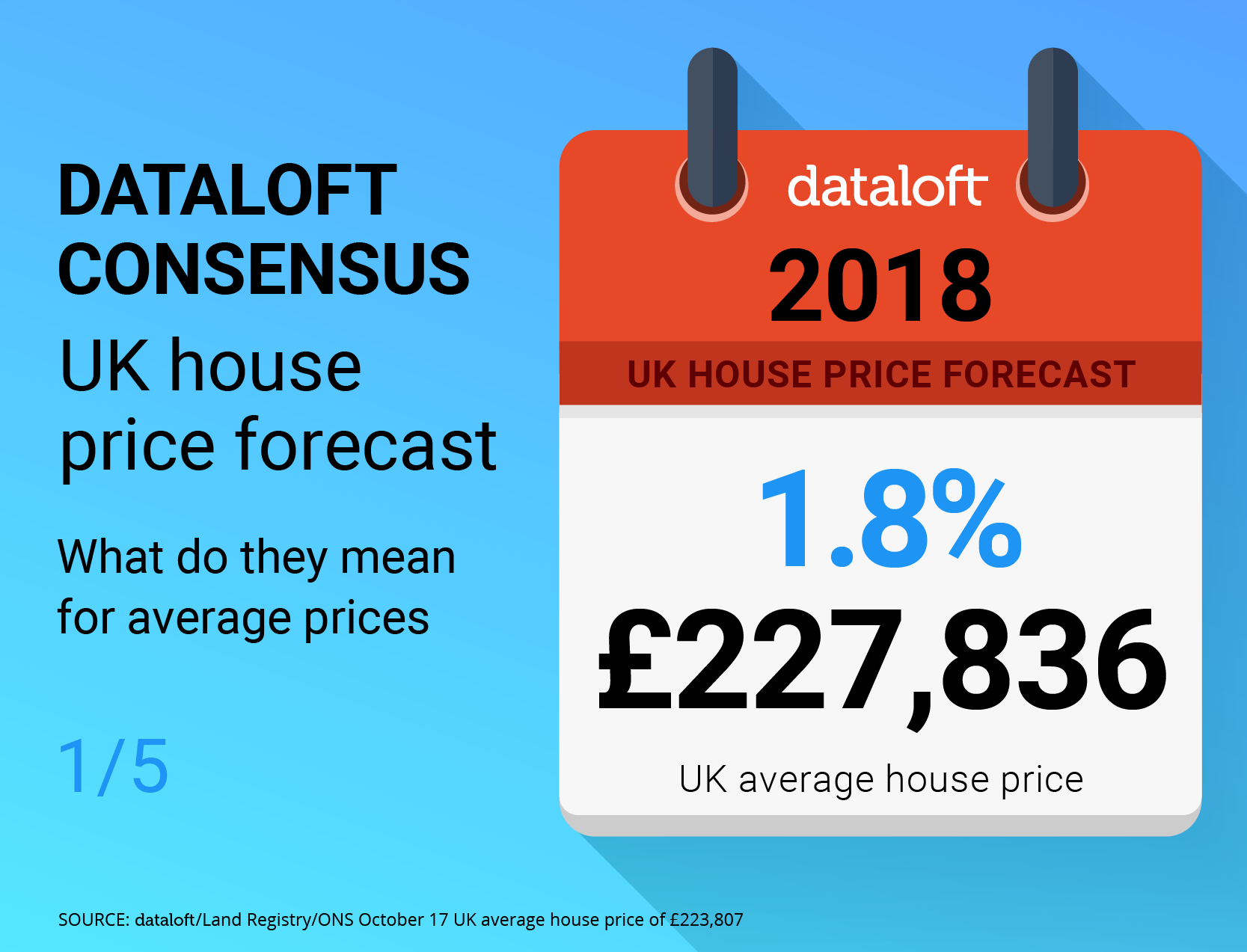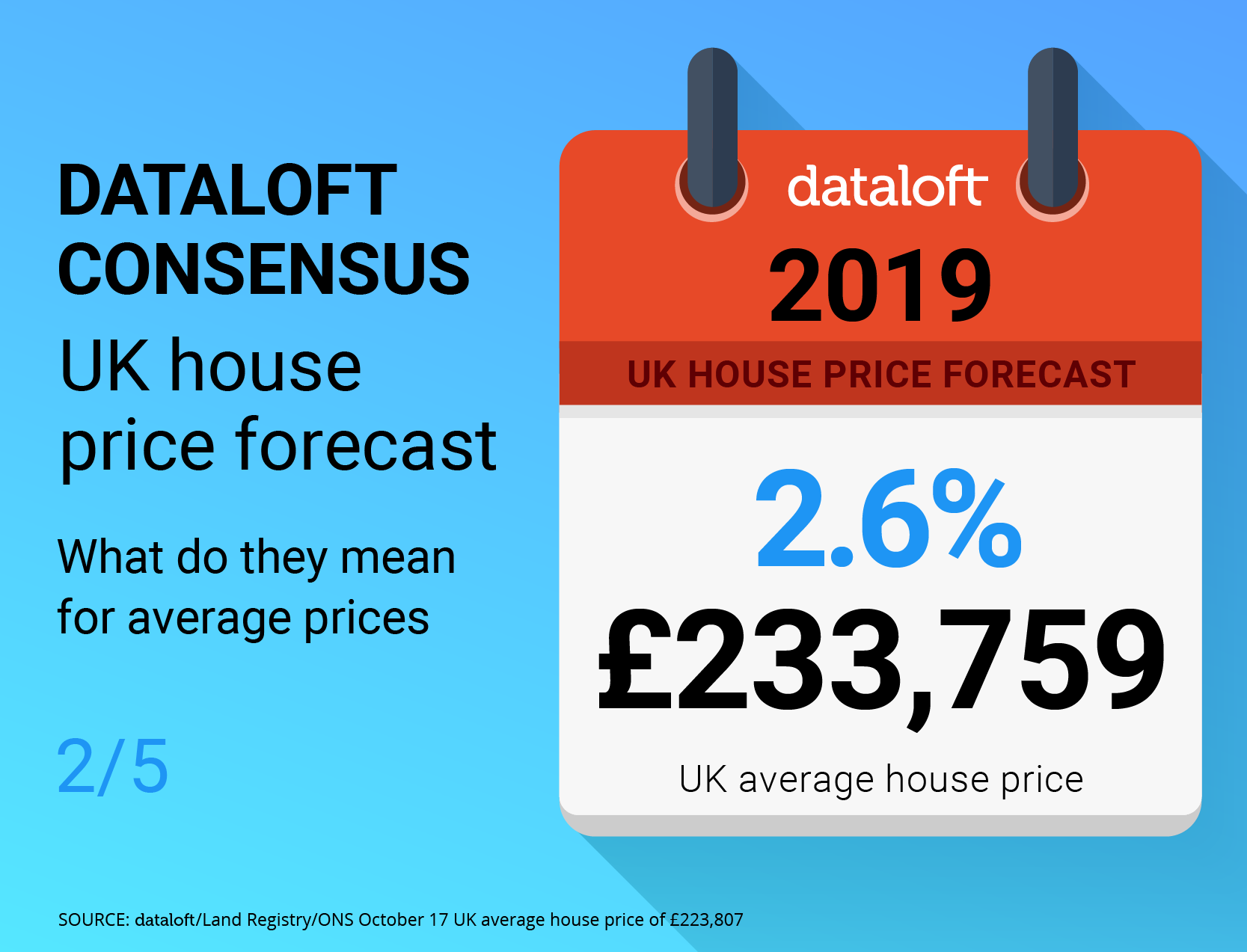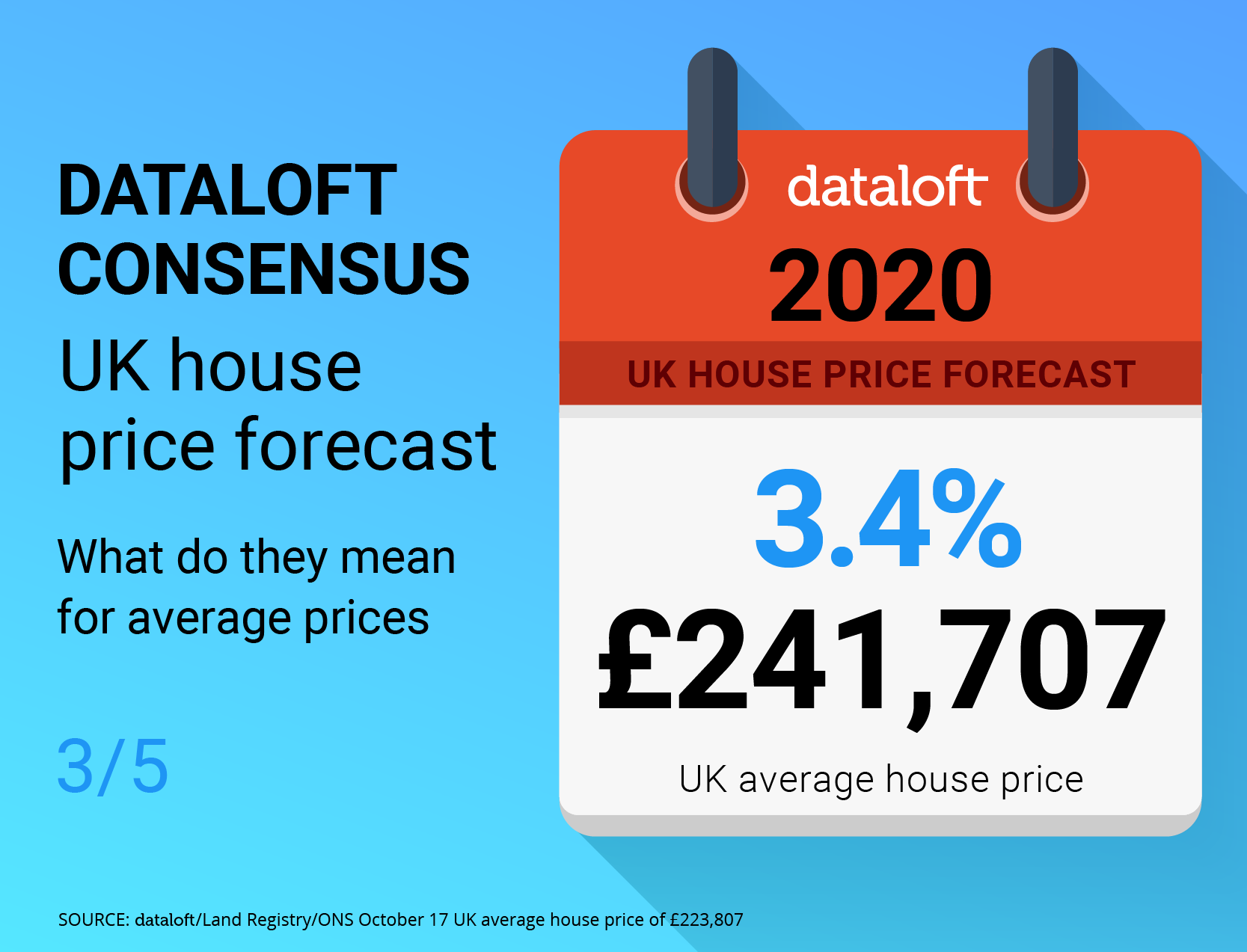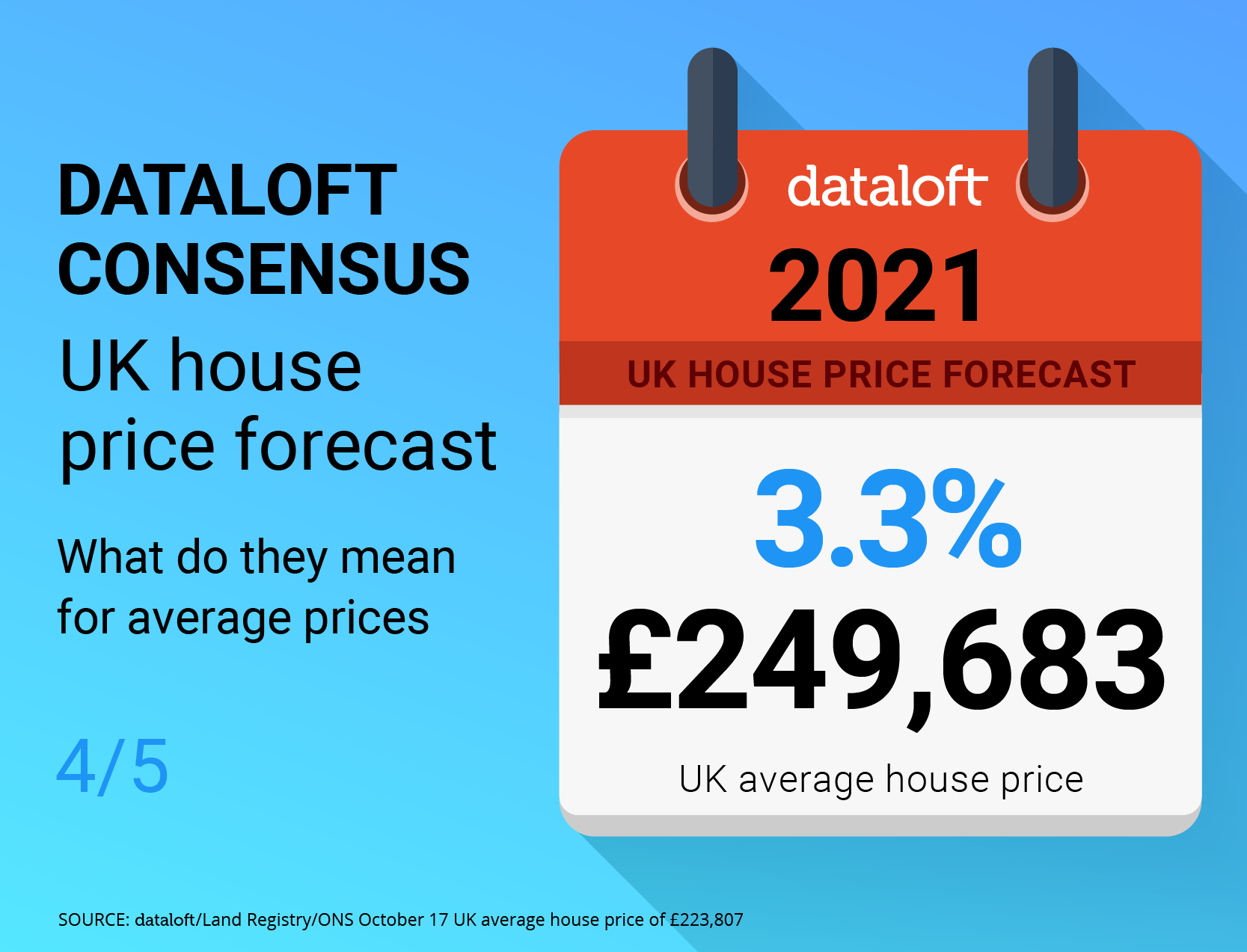Let’s start with our own view: Dataloft expects that UK house prices will rise in 2018 but only by a narrow margin – an average of around 1.8%, ranging from small falls in some markets – notably London, to a 5% uplift in others.
The Treasury, the Office for Budget Responsibility (OBR) and multinational professional services firm PwC have published slightly more optimistic forecasts for the UK average price growth, of 1.9%, 3.1% and 4% respectively but our view is in line with the major agents, Savills, Knight Frank and JLL.
An escalation in our forecast rates of growth could be triggered by successes in the Brexit negotiations and if economic indicators return to their pre-Brexit trajectories. Downside risks include significant job losses, rising inflation and rising interest rates – all of which will put a squeeze on affordability. New housing supply may also increase as the government continues support this ambition but it is unlikely reach a level which will plug the gap between supply and demand to a level which impacts pricing at a national level.
As ever, there will be significant variations at local level – these are, after all, forecasts of the national average. Local markets can outperform for a plethora of reasons, including: new train services, new employers, new visitor attractions and new housing completions. The national outlook is mostly driven by availability of mortgage finance and economic confidence – if either are low, demand subsides.
To put forecasts in context, we need to reflect on the state of the market at the end of 2017. The prospect of Brexit and associated economic uncertainty overshadowed the UK in 2017. In the light of this, the UK housing market was surprisingly resilient and continued to gain value, albeit at much reduced rates of 2.4%/2.5% according to Halifax/Nationwide, or 4.5% based on Land Registry/ONS. In fact, the pace of growth exceeded some expectations, Savills, for example predicted 0% growth in 2017 but fell woefully short of others, such as the OBR’s prediction of 6.5% growth.
For good or bad, housing and house prices were high up the political agenda in 2017, culminating in the abolition of stamp duty for first time buyers in November, for purchases up to £300,000 (or the first £300,000 for properties up to the value of £500,000). Other notable policy interventions targeted the buy to let sector, creating further disincentives to private individual landlords and effectively reducing competition for owner occupiers.
In London, affordability (the ratio between house prices and earnings), or lack of it, began to impact house price growth and the market experienced a significant cool down. We expect the slow market to persist, to give house prices and earnings time to realign. For that reason alone, the UK mainstream market is likely to outperform the London in 2018. The prime London market is also under pressure, still reeling from the shock of further stamp duty changes that affected the top end of the market.
Our national forecast of 1.8% growth in 2018, is based on the signals from these leading indicators: economic growth; interest rates and affordability and sentiment.
The outlook for the UK economy remains uncertain in the lead up to Brexit and wage growth is likely to be muted as a result, although no sharp falls are expected. All economic indicators are expected to pick up momentum once a Brexit deal has been completed.
Inflation has eaten into household earnings. Any rises in interest rates will push up the cost of borrowing (even if gradually) and, although still low compared to the long term average, it may mean some aspirational homeowners find that they are out of reach for qualifying for a mortgage under the stricter assessments regime introduced after the Global Financial Crisis (GFC) in 2008/9.
Even so, there is room for further house price growth outside of London, as affordability has not been as stretched, particularly in the midlands and more northern regions. Hometrack’s latest Cities Index highlighted that house prices are growing the fastest at a city-wide level in Edinburgh and Glasgow.
The RICS monthly agent survey gives a useful indication of sentiment in the sector. Opinion on the prospects for house price growth was negative in November 2017, for the fourth consecutive month.
There are also other indicators that impact at a more localised level such as the performance of the London market on the region’s commuter zone, levels of new housing supply, infrastructure improvements and policy affecting sub-markets such as buy-to-let.
While there are variations in the house price forecasts for UK house prices for 2018, as is shown by the individual forecasters contributing to the Treasury consensus (i.e. from negative figures to +4%), at Dataloft we predict that average prices will rise by low levels again this year (1.8%).
The outlook for UK house prices for the next few years is likely to be a period of continued and prolonged period of low levels of house price growth. Unlikely, however, that we will see price drops across the board although this may happen in some markets.






